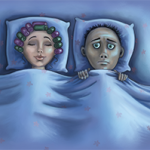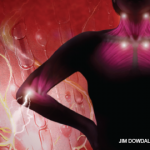I was supposed to have an appointment with a primary care physician to discuss this—probably do some tests and X-rays and such. But the family history of having inflammatory arthritis wasn’t the only thing that ran in my family. I kept postponing my clinic visit during a very busy residency period. In the few times I had what appeared to be flares, I called the clinic for an appointment, only for the clinic date to be so far away that it never seemed to matter. I continued with my ibuprofen as needed.
While this story is certainly my own, it’s also the type of story that I hear often from my patients. I recognize the temptation of denial and delay. The first step of diagnosis is self-awareness, so it’s a cruel irony that patients, even physicians as patients, often don’t have the information necessary to become aware of the problem. Moreover, even with the understanding of the severe consequences of untreated autoimmune rheumatologic disease, it’s somewhat overwhelming to make a decision, and it sounds a little easier to just delay and hope for the best.
Being Both Patient & Doctor
There is admittedly a lot to unpack here. As rheumatologists, we often think about our rheumatic diseases as sources of physical pain. But during these episodes, I’ve found that the joint pain is only a small part of the larger pain that comes with rheumatic disease. Our entire mindset and worldviews change, as if a veil drops in front of your eyes. A condition that is chronic, as well as relapsing and remitting, comes with its own set of peculiarities.
The first thing that I—as a rheumatology patient—would like every rheumatologist to know is how much autoimmune rheumatologic disease affects our sleep and, as a result, diminishes our energy levels. During flares, the pain and stiffness, especially in my back, interfered with sleep. It didn’t stop me from falling asleep, but with every toss and turn in the early mornings, I was jolted awake by the pain. Trying to get back to sleep is a challenge, especially while trying to get into a position that keeps me comfortable for longer periods of time. And, of course, this has downstream ramifications. During flares, I wake up slightly earlier, not only because of the pain and stiffness interfering with sleep, but also because it takes longer to become functional during the morning with such prolonged morning stiffness. This lack of nighttime sleep means that I have to have a midafternoon nap to keep productive through the day. It’s not just the quantity of sleep that affected me. During flares, the lack of quality sleep means that I am foggier and have to rearrange my life to ensure that I can retain my focus. When I do sleep, nightmares are not unusual, likely due to the pain and the inflammation.



